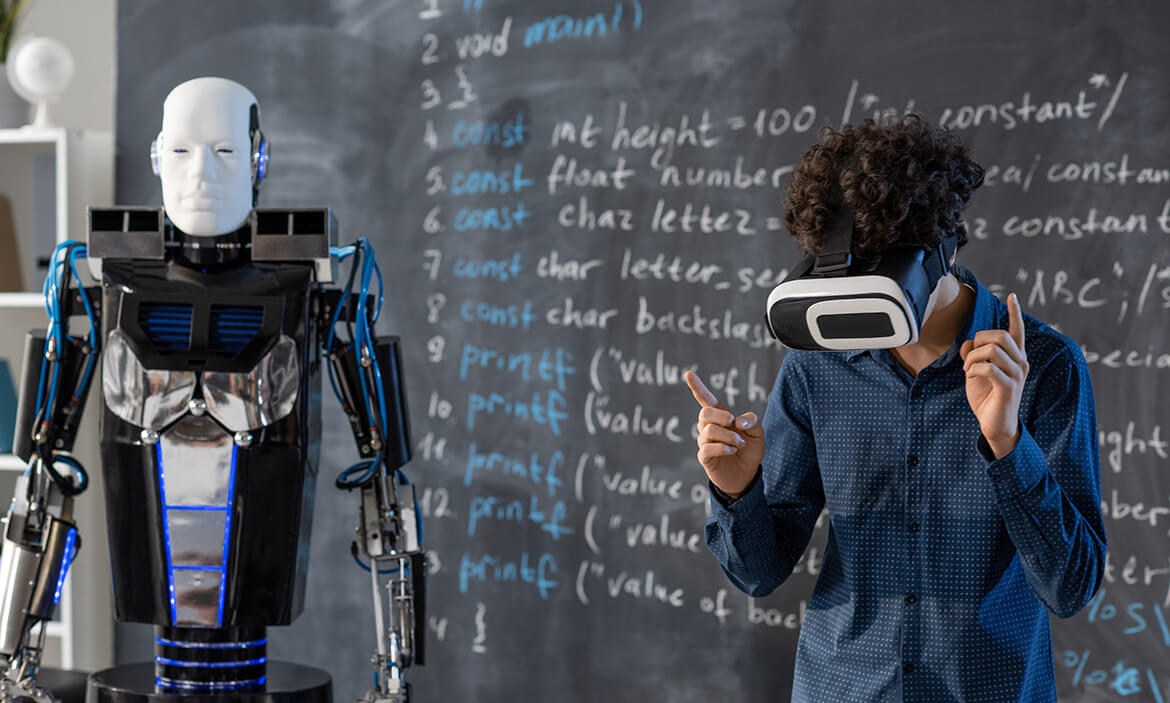Technical Documentation Translation Services for Medical Devices
Accurate, compliant translations for EU MDR, FDA, and global regulatory submissions — delivered by life sciences experts.
Understanding Technical Documentation for Medical Devices
Technical documentation refers to the structured set of documents required to demonstrate that a medical device complies with regulatory and safety requirements. These files include essential information such as device specifications, manufacturing processes, clinical evaluations, risk analyses, and post-market surveillance data.
For manufacturers expanding into global markets, translating these materials accurately is not optional—it is a regulatory requirement. Incorrect or incomplete translations can delay approvals, lead to non-compliance findings, and compromise patient safety.
Sesen provides specialized technical documentation translation services tailored to the unique regulatory frameworks of the medical device industry, including the EU Medical Device Regulation (MDR Annex II & III) and FDA 21 CFR Part 820. Our expertise helps ensure your submissions meet local authority expectations with precision, clarity, and consistency.
Why Accurate Technical Documentation Translation Matters
At Sesen, we understand that accurate technical documentation translation is essential for medical device companies navigating global regulatory pathways. Regulatory bodies such as the EU MDR, FDA, Health Canada, and PMDA Japan require that all supporting documentation be submitted in the local language — and any inaccuracies can lead to delayed approvals, product recalls, or enforcement actions.
Beyond compliance, high-quality translations ensure clear communication across global teams, manufacturing partners, and regulatory consultants. This alignment supports consistency in device development, risk management, and post-market activities.
Accurate translations also play a critical role in quality management system (QMS) documentation, enabling smoother audits and inspections. Whether you're preparing a CE marking submission, a 510(k) filing, or technical files for international registrations, Sesen delivers the linguistic precision and regulatory insight required to move forward with confidence.
Types of Technical Documentation We Translate
Sesen provides expert translation of a wide range of technical documentation required for medical device registration, quality assurance, and compliance across global markets. Our linguists and subject matter experts work with complex, highly regulated content to support CE marking, FDA clearance, and other international submissions. We translate the following document types with regulatory precision:
Device descriptions and intended use statements
Clearly defined product scope and clinical applications, as required by EU MDR Annex II.
Design and manufacturing process documentation
Includes design verification, development files, process controls, and production specifications.
Risk management documentation (ISO 14971)
Hazard identification, risk analysis, mitigation strategies, and risk-benefit justifications.
Clinical Evaluation Reports (CERs)
Comprehensive clinical evidence used to demonstrate device safety and performance.
Post-Market Surveillance (PMS) plans and reports
Translations of ongoing monitoring strategies and findings required under MDR and equivalent global frameworks.
Software validation and verification reports
Technical files for embedded or standalone medical software and SaMD (Software as a Medical Device).
Biological safety and biocompatibility evaluations
Required for Class II and III devices to document toxicological risk assessments.
Instructions for installation, calibration, and servicing
Technical user guides for internal teams, installers, and field service engineers.
Quality Management System (QMS) documentation
Includes SOPs, quality manuals, and records supporting ISO 13485 certification.
Regulatory submission packages
Multilingual support for EU MDR, 510(k), PMA, Technical Files, and international registration dossiers.
We also offer specialized IFU Translation Services for patient-facing documentation required as part of labeling and packaging compliance.
Regulatory Expertise: MDR, FDA, and Beyond
Sesen delivers technical documentation translation services aligned with the latest global regulatory frameworks for medical devices. We translate content in accordance with EU MDR Annex II and III and FDA 21 CFR Part 820, ensuring your documentation meets the language and format expectations of Notified Bodies, Competent Authorities, and regulatory reviewers worldwide.
Our team is highly familiar with the core ISO standards that govern medical device development and documentation, including:
- ISO 13485 – Quality management systems for medical devices
- ISO 14971 – Risk management for medical devices
- ISO 14155 – Clinical investigations of medical devices
- ISO 17100 – Translation services quality standard
Our regulatory linguists and project managers closely follow updates from the European Commission, FDA, Health Canada, and other authorities to maintain compliance with evolving submission requirements. Whether you're preparing for CE marking, 510(k) clearance, or market entry in APAC or LATAM regions, Sesen ensures your translated technical files are accurate, audit-ready, and fully aligned with the latest guidance.
Our Proven Translation Process for Medical Device Technical Documentation
At Sesen, we follow a structured, quality-driven process tailored to the complexity and regulatory sensitivity of medical device technical documentation. Our workflows are designed to maintain linguistic accuracy, terminology consistency, and full audit traceability — from source file to final delivery.
Here’s how we ensure your technical translations are submission-ready:
Terminology Management and Glossary Creation
We start by building client-approved glossaries and terminology databases specific to your device class, therapeutic area, and regulatory context. This ensures consistency across all documents, especially for critical safety and compliance terms.
Translation by Subject-Matter Experts
All translations are performed by linguists with proven expertise in medical technology and regulatory language. Our translators understand device classification, risk documentation, and submission structures.
Multistage Quality Assurance (QA) Review
Every translation undergoes a rigorous QA process, including bilingual review, proofreading, and validation against source content. This multistep check ensures accuracy, completeness, and alignment with industry standards such as ISO 17100.
Client Review and Change-Tracking
We incorporate your internal feedback through tracked changes and maintain clear version control throughout the revision process. This collaborative step ensures alignment with your regulatory and technical teams.
Final Formatting and Submission-Ready Delivery
Files are delivered in your required formats (Word, XML, InDesign, PDF, etc.) — fully formatted and ready for regulatory submission or audit inspection. We support multilingual document sets and localized formatting requirements.
Our services also extend to Regulatory Labeling Translation, ensuring consistency across technical files, IFUs, and product labels.
Sesen’s process ensures every technical document is translated with precision, fully traceable, and aligned with global regulatory expectations.
Technology-Driven Human Translation for Technical Documentation
Sesen combines advanced translation technologies with human subject-matter expertise to deliver accurate, consistent, and fully compliant translations for medical device technical documentation.
We leverage computer-assisted translation (CAT) tools and translation memory (TM) systems to maintain consistency across complex document sets. These technologies enable precise reuse of previously approved content, reduce turnaround time, and improve cost efficiency — particularly for iterative updates to technical files and regulatory submissions.
Our proprietary AI-powered terminology validation engine supports linguists during the review phase, helping flag potential inconsistencies and validate critical terms against client-approved glossaries and regulatory language. This intelligent layer enhances quality control without compromising human oversight.
Importantly, Sesen never use machine translation for technical documentation. All content is translated and reviewed by qualified subject-matter experts to meet regulatory expectations and ensure safety-critical accuracy.
This technology-enabled, human-led approach allows us to deliver reliable multilingual documentation that stands up to scrutiny from Notified Bodies, Competent Authorities, and regulatory auditors worldwide.
Multilingual Support for Global Market Submissions
Sesen provides expert technical documentation translation in over 150 languages to support regulatory submissions and device registrations worldwide. As part of our broader Medical Device Localization services, we support translation, formatting, and adaptation for region-specific regulatory and cultural requirements to meet the expectations of health authorities across the EU, Asia-Pacific, Latin America, and the Middle East.
We have extensive experience translating into:
- All 24 official EU languages for CE marking under EU MDR
- Asian markets, including Japanese, Simplified Chinese, Traditional Chinese, and Korean
- Right-to-left (RTL) languages, such as Arabic and Hebrew, with full formatting support
- Cyrillic-based languages, including Russian, Ukrainian, and others
- Latin American Spanish, Brazilian Portuguese, and additional regional variants
Our linguists are native speakers with medical device translation expertise, and our production teams are equipped to handle complex multilingual formatting, including non-Latin character sets, bidirectional text, and locale-specific layout adjustments.
Whether you’re submitting a technical file to the European Medicines Agency, PMDA Japan, ANVISA Brazil, or a regional Ministry of Health, Sesen ensures your documentation meets the linguistic and formatting requirements of each target market with precision.
Why Leading MedTech Companies Trust Sesen
Top medical device manufacturers and regulatory teams choose Sesen for technical documentation translation because of our unmatched focus on life sciences, proven regulatory expertise, and commitment to quality and reliability.
Specialized in Life Sciences
Unlike generalist providers, Sesen is exclusively focused on the life sciences industry. Our translators, reviewers, and project managers are trained in medical device terminology, regulatory language, and therapeutic area-specific content.
Dedicated Project Management by Industry Experts
Each project is managed by a dedicated team with deep experience in medical device submissions, ensuring seamless communication, proactive issue resolution, and alignment with your regulatory strategy.
Certified Quality Processes
Sesen is fully certified to ISO 17100 (translation services), ISO 13485 (medical device quality systems), and ISO 9001 (quality management). These standards are embedded into our workflows to deliver consistent, audit-ready results.
Learn more about our Quality Assurance Process translation accuracy and traceability.
Reliable, On-Time Delivery
We understand the impact of submission timelines on market entry and regulatory approvals. Our teams are structured to meet accelerated turnaround requirements without compromising accuracy or compliance.
Proven Track Record with Global MedTech Clients
We’ve supported leading organizations such as Deloitte’s WAEP program, AspenTech, and other global device manufacturers with translation services for regulatory submissions, software validation documents, and multilingual labeling projects.
Sesen is more than a translation vendor — we are your strategic partner in regulatory success.
Common Challenges – and How Sesen Solves Them
Medical device companies face several translation-related obstacles when preparing technical documentation for regulatory submission. At Sesen, we proactively address these challenges with specialized workflows and industry-informed solutions that reduce risk and accelerate approvals.
Inconsistent Terminology Across Documents
Inconsistent use of regulatory, technical, or product-specific terms can lead to confusion, rework, or regulator requests for clarification.
Sesen’s Solution: We build and maintain custom multilingual glossaries aligned with client preferences and applicable regulatory language. A reviewer feedback loop ensures continuous refinement and terminology consistency across all document types.
Delayed Submissions Due to Missing or Late Translations
Delays in receiving translated documents can stall CE marking, 510(k) submissions, or market entry in key regions.
Sesen’s Solution: Our integrated translation workflows are built for speed and traceability. We also offer expedited turnaround services with priority resourcing to meet tight regulatory deadlines without compromising quality.
Regulatory Pushback on Poorly Translated Content
Unclear or imprecise translations may trigger questions from Notified Bodies or Competent Authorities, delaying approval or requiring rework.
Sesen’s Solution: All translations are performed or reviewed by subject-matter experts (SMEs) with medical device experience. We maintain a full QA documentation trail, ensuring transparency, traceability, and regulator-ready output.
By addressing these common pain points upfront, Sesen helps medtech clients streamline regulatory translation workflows and reduce the risk of submission delays.
Frequently Asked Questions
What technical documents require translation under EU MDR?
Under EU MDR Annex II and III, manufacturers must translate a wide range of technical documentation into the official language(s) of the EU member state where the device will be marketed. This includes the device description, intended use, design and manufacturing information, risk management files, clinical evaluation reports (CERs), post-market surveillance documentation, and more.
Do I need translations for FDA 510(k) submissions?
While the FDA accepts documentation in English only, translations may still be required for user-facing materials such as instructions for use (IFUs), labeling, and promotional content for global distribution. If you’re pursuing multi-region approvals in parallel, translation services become essential.
How does Sesen ensure the accuracy of technical translations?
Sesen follows a structured, ISO 17100–certified process that includes terminology management, subject-matter expert review, and multistage quality assurance. We also maintain a full QA documentation trail and offer client review cycles with change-tracking to ensure alignment and accuracy.
Can you handle updates to previously translated files?
Yes. Sesen uses translation memory (TM) tools to identify and update only the modified segments of a document, ensuring consistency and cost efficiency. We also version-control all files to track changes over time.
What languages does Sesen support for medical device translations?
Sesen supports translation into over 150 languages, including all EU official languages, as well as Japanese, Simplified/Traditional Chinese, Korean, Arabic, Russian, Brazilian Portuguese, and many more. We also handle complex multilingual formatting and non-Latin scripts.
Can you assist with multilingual formatting for regulatory submissions?
Absolutely. We provide desktop publishing (DTP) and localization engineering services to ensure your translated technical documents meet formatting requirements for right-to-left (RTL) languages, Asian character sets, and submission-ready layouts in PDF, XML, Word, or InDesign formats.
Ready to Translate Your Technical Documentation with Confidence?
Need MDR-compliant, audit-ready translations for your medical device technical files? Connect with Sesen to request a quote or schedule a free consultation with our regulatory translation experts.






